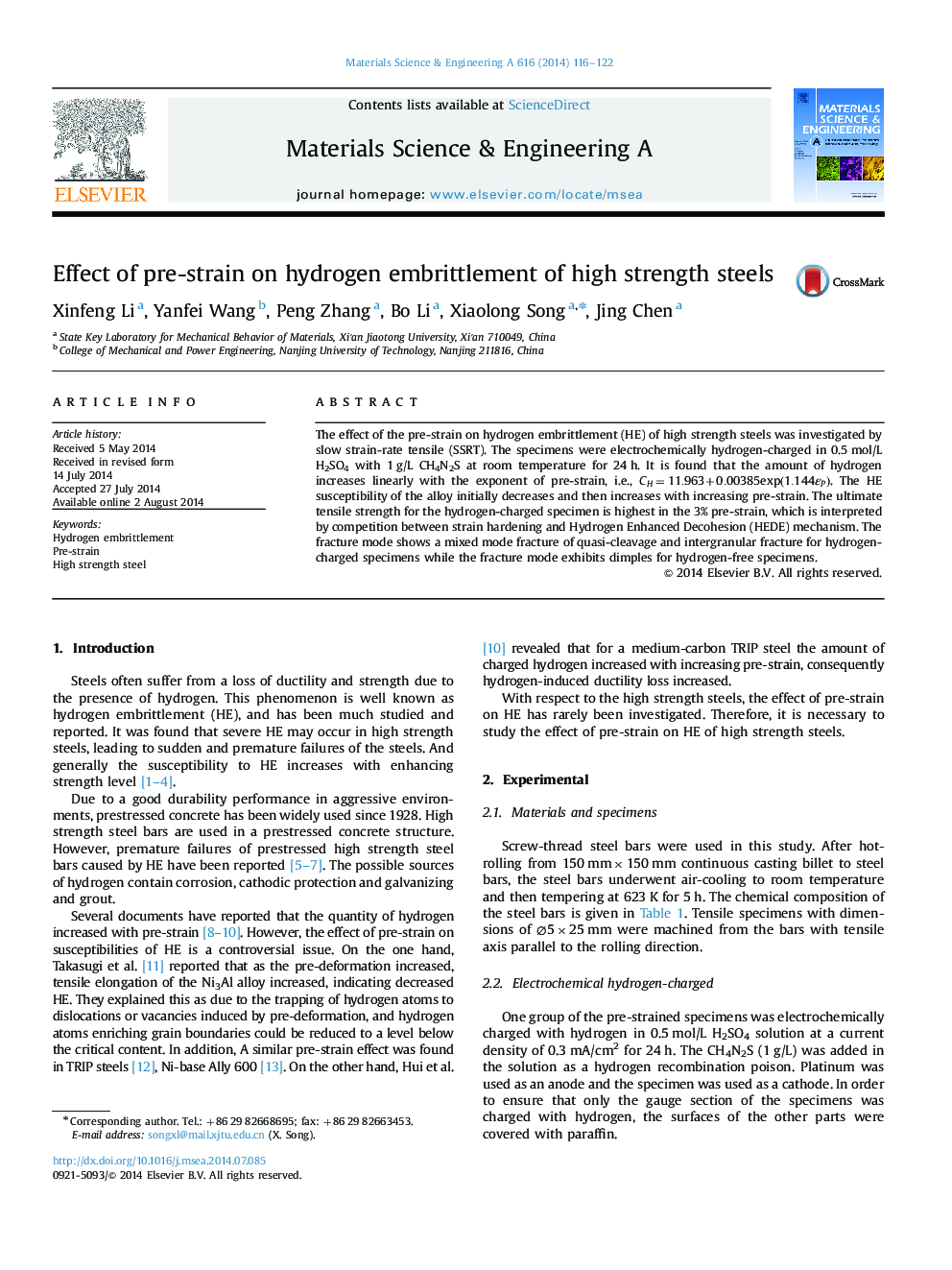| Article ID | Journal | Published Year | Pages | File Type |
|---|---|---|---|---|
| 1574805 | Materials Science and Engineering: A | 2014 | 7 Pages |
Abstract
The effect of the pre-strain on hydrogen embrittlement (HE) of high strength steels was investigated by slow strain-rate tensile (SSRT). The specimens were electrochemically hydrogen-charged in 0.5 mol/L H2SO4 with 1 g/L CH4N2S at room temperature for 24 h. It is found that the amount of hydrogen increases linearly with the exponent of pre-strain, i.e., CH=11.963+0.00385exp(1.144εP). The HE susceptibility of the alloy initially decreases and then increases with increasing pre-strain. The ultimate tensile strength for the hydrogen-charged specimen is highest in the 3% pre-strain, which is interpreted by competition between strain hardening and Hydrogen Enhanced Decohesion (HEDE) mechanism. The fracture mode shows a mixed mode fracture of quasi-cleavage and intergranular fracture for hydrogen-charged specimens while the fracture mode exhibits dimples for hydrogen-free specimens.
Related Topics
Physical Sciences and Engineering
Materials Science
Materials Science (General)
Authors
Xinfeng Li, Yanfei Wang, Peng Zhang, Bo Li, Xiaolong Song, Jing Chen,
